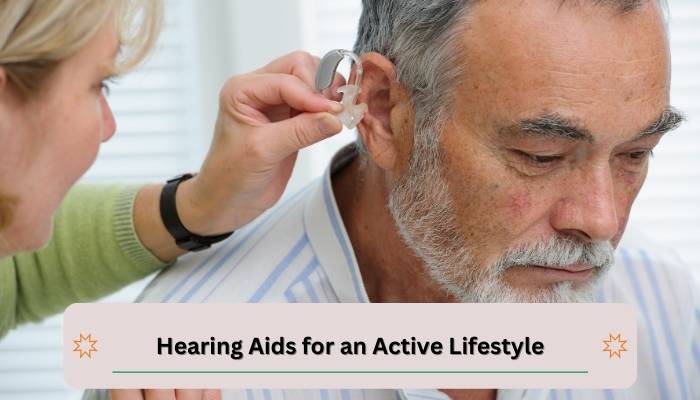
Frequently, those over the age of 55 come to mind when we think about hearing loss. However, hearing loss is not always age-related, and hearing aids significantly improve your quality of life regardless of your age. Your activities shouldn’t be affected if you wear a listening aid to improve your hearing. The top hearing aids for an active lifestyle come with unique functions that will keep you moving and your devices in top condition.
Examine the models
Hearing aids come in a variety of designs. Others sit in the ear canal, while still others are worn behind the ear. Some are invisible and fit inside the ear. The behind-the-ear style suits most busy folks. Wearers of this design claim that it lets them hear background noise clearly without feeling “stuffy.”
However, if you wear a helmet or other equipment for an extended period of time, a behind-the-ear unit can become uncomfortable. Others believe that wearing headbands or helmets is made possible by in-ear headphones. Short battery life and a unique installation technique, however, could be obstacles.
Check your needs
Hearing aids may now “learn” and adjust to different environments thanks to smart technology. For instance, wind noise can be an issue whether you ride a bike, run, or stroll. Some hearing aids have the ability to control the wind noise’s volume and lessen its impact on the microphone. Depending on where you are, other people can adjust the loudness of the noise to better match what you hear.
Waterproof hearing aids are advantageous for sailors, swimmers, and water sports enthusiasts. There are devices that can be utilized while working out or even taking a shower. The IP scale, which stands for Ingress Protection, is used to assess these hearing aids. The device’s ability to keep out solid substances like dust, dirt, or earwax, as well as how long it can keep out water seepage, are both rated by the IP number.
Supplementary equipment
Active people are aware that moisture and sweat are the enemies of hearing aids. Overnight moisture removal can be accomplished using specialized accessories like a dehumidifier. There are various sports where a “puffer” may come in handy. Small amounts of air are “puffed” into hearing aid tubes by this portable device to keep them dry and clean. The purpose of hearing aid clips is to prevent your devices from falling out by keeping them fastened to each other or your clothing.
Battery Life
A hearing aid with a lengthy battery life is better for people who are more active. Zinc batteries are typically thought of as the most reliable batteries, giving hearing aids the longest life.
Size matters
A hearing aid is typically more suited for someone who leads an active lifestyle if it is smaller. Moreover, simply wearing hearing aids can also help reduce tinnitus symptoms. Since they fit deep inside the ear canal, the smallest hearing aids on the market are almost undetectable. As a result, these tiny hearing aids don’t interfere with the usage of headgear like a headband or helmet. The drawback of smaller hearing aids is that their batteries often have a shorter lifespan—roughly five to ten days as opposed to two or three weeks.
Receiver-in-the-ear hearing aids
Even more recent than extended wear hearing aids are receiver-in-the-ear (RITE) devices. The greatest candidates for these hearing aids are those who enjoy social situations and conversational activities like dinners, debates, and discussions.
If you’re an active person, speak with your audiologist more to find out what the finest hearing aid models and features are for you. Your audiologist will work with you to choose the best hearing aids for your unique needs because they want you to be happy with them.
Other features
Not only are noise cancellation, directional microphones, and noise reduction useful when you’re active, but they’re also useful when you’re at home, at a loud concert, or perhaps in a noisy restaurant.
Hearing aids that you like to wear because they’re cosy and effective are the finest ones for an active lifestyle. People sometimes stop wearing hearing aids because they don’t fit properly, which is counterproductive. Your audiologist will be able to show you the hearing aids that will fit your lifestyle the best if you discuss your sporting activities with them.
Are you a person who is active? Do you enjoy going on hikes, biking, shooting hoops, or playing in the water? If you are, and you meet the requirements for hearing aids, you may rest easy knowing that the hearing aid industry respects your desire to continue being active. As a result, hearing aid manufacturers have put a lot of effort into developing hearing aid models and accessories that are suitable for those who lead busy, active lives.

Lifebing is driven by an unrelenting passion for promoting health and well-being, our team is wholly committed to curating exceptional content and immersive experiences.
